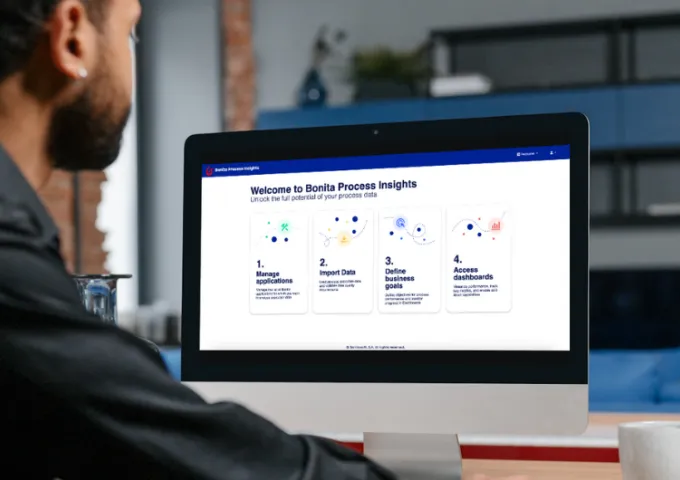Author – Sandy Kemsley - Column 2
We are happy to welcome Sandy Kemsley, independent analyst and systems architect, specializing in digital process automation, for a guest blog post about BPM and Artificial Intelligence.
As business process management systems (BPMS) mature, we have moved beyond systems that merely execute pre-defined process models to more intelligent systems that dynamically support, guide and automate processes. To drive innovation and maintain operational efficiencies, we need to augment processes and human intelligence with machine intelligence. How do all of these technologies fit together, and how can they help businesses achieve operational benefits?
In 2016, I was asked to contribute to the Workflow Management Coalition’s book “Best Practices for Knowledge Workers.” My section, “Beyond Checklists”, called for more intelligent adaptive case management to drive innovation while maintaining operational efficiency. By the next year, they published “Intelligent Adaptability,” and I contributed a section called “Machine Intelligence and Automation in ACM [Adaptive Case Management] and BPM” that carried forward these ideas further. Another year on, it’s time to take a look at how the crossover between BPM and artificial intelligence (AI) – indeed, between BPM and a wide range of intelligent technologies – is progressing.
Understanding intelligent technologies in the context of BPM
Two factors have driven the blending of BPM and intelligent technologies: the emergence of BPMS’ as general-purpose application development platforms that allow the easy integration of other technologies; and the need to automate processes and decisions for business reasons ranging from efficiency to compliance. Typical intelligent technologies that are complementary to BPM include:
• Business rules and automated decisioning enforce regulations and best practices. These can ensure that a knowledge worker doesn’t violate standard procedure for a specific task, and that the same decision logic is applied to each case.
• Predictive analytics recommend actions to workers based on similar past situations and the current context. This reduces the learning time for workers and helps them to make better decisions.
• Machine learning (ML) and robotic process automation (RPA) automate semi-skilled tasks by learning from human actions to determine what activities need to be done to complete a task. This offloads semi-skilled tasks from knowledge workers, freeing them to focus on more complex unstructured work.
• Internet of things (IoT) event handling interacts with external devices and activities, and can automatically trigger processes and activities based on events generated by remote devices or external data.
• Complex event/stream processing watches for patterns across transactions, and can trigger new processes or alerts in response to anomalies.
• Process mining detects emergent process models and behavior, and can recommend actions and make predictions about process completion.
Not all of these technologies are classified as AI, but AI and ML are becoming building blocks within many other technologies, which is blurring the line between what exactly is and is not AI. RPA, for example, can be implemented through simple training techniques that record and play back a user’s actions; its real potential emerges when an RPA learning agent is deployed in advance to watch a worker’s actions for a period of time and figure out the best way to replace them all on its own.
Event processing is another technology that has its roots in more standard decision management, but adding AI/ML allows patterns to be detected across many thousands of transactions that might not be readily codifiable in advance. This can be used, for example, for detecting fraudulent activities in financial transactions, network security breaches based on access methods, and preventative equipment failure from machine logs. Although much of this would be done outside of a BPMS, an event processing system would initiate investigation processes in the BPMS.
Another example is process mining, which can use standard algorithms for process discovery to show what paths a process instance has taken, but it gains much more power when combined with AI. By introducing goals in the form of process metrics and allowing AI to seek the best path forward, these algorithms can predict the completion for a process instance, choose which route to take to improve the process metrics for that instance, and recommend ways in which the underlying process can be improved for future work. This last capability – having AI “tune” a process model to drive towards optimal performance – closes the loop on process optimization and allows processes to become self-healing.
Of course, these technologies are not mutually exclusive: it’s common to see many of them combined into a single system to create smarter processes.
Business innovation through intelligent processes
As a technologist, I find the technologies very interesting, but what really matters is what they allow businesses to do. First, we see a number of operational benefits:
• Improved efficiency, both in terms of worker hours and end-to-end cycle time for a transaction.
• Improved quality and compliance due to standardized processes and decisions.
• Free up skilled workers to deal with customer issues and other unstructured work.
All of these contribute to improved customer satisfaction, and can also increase job satisfaction by automating unskilled and semi-skilled tasks that are non-value-added overhead in most workers’ workload.
Going beyond these baseline operational benefits, smarter BPM with AI/ML allows businesses to do things that just weren’t possible before. For example, it’s possible to not just predict which process instances are likely to miss their service level agreements or regulatory targets, but recommend – or even automate – corrective actions to meet the deadlines. These actions could include skipping approval steps for low-risk instances, adjusting priorities in work queues, or allocating work to external contractors.




